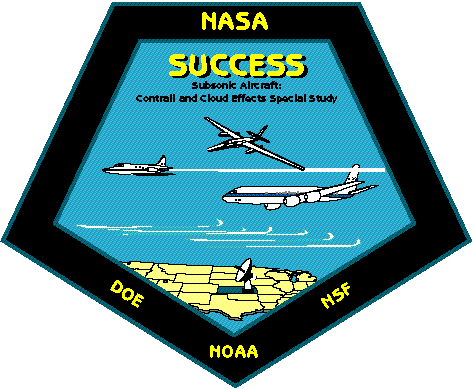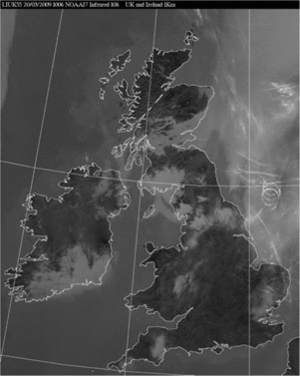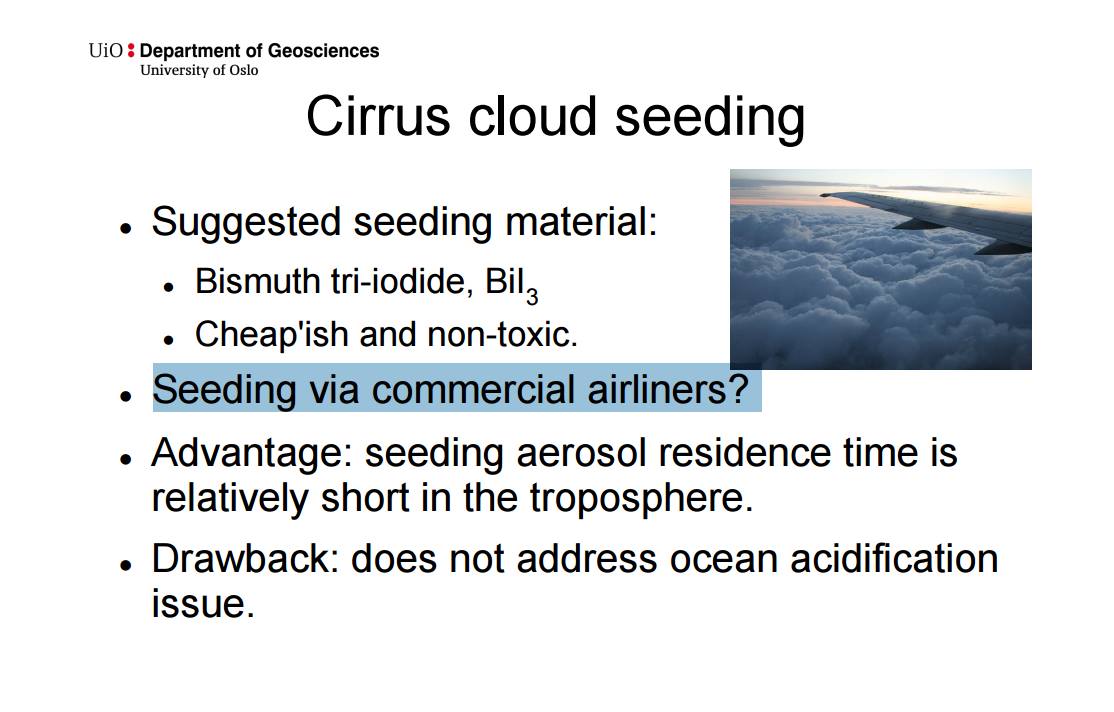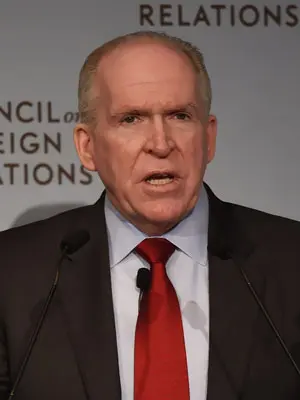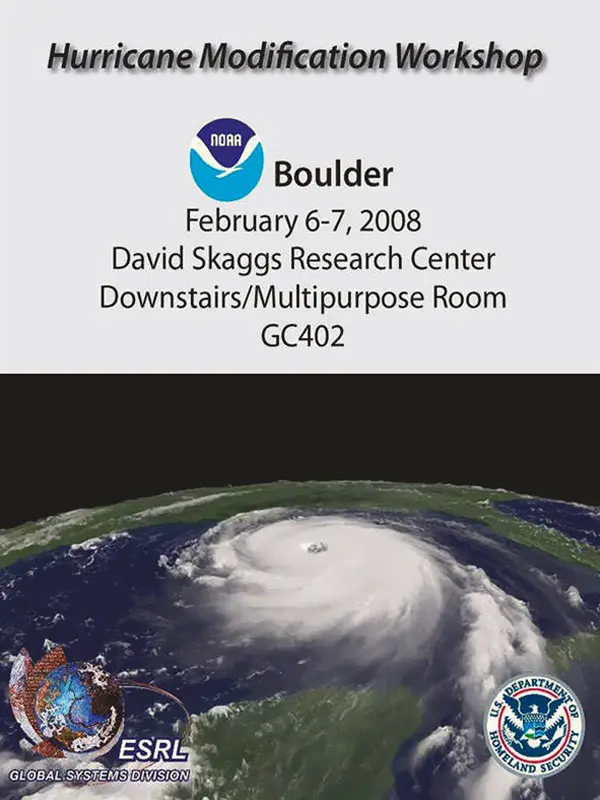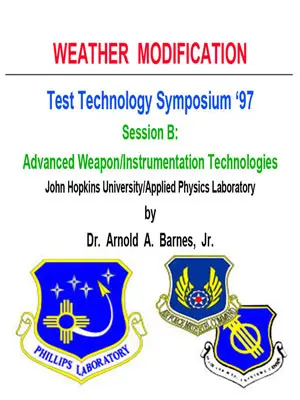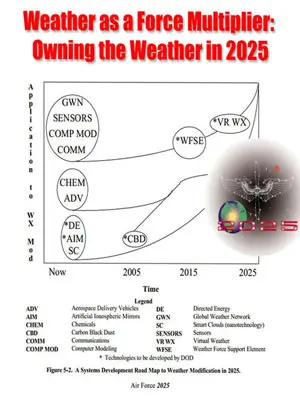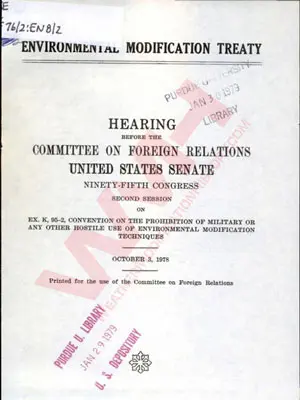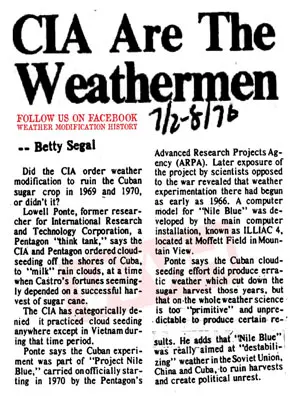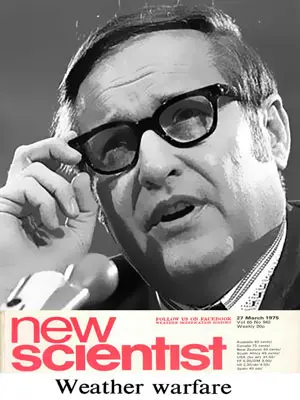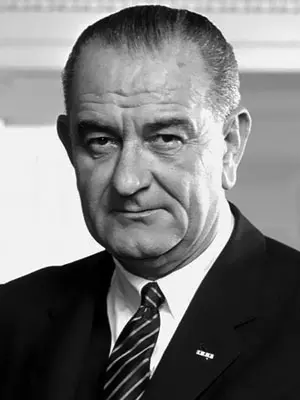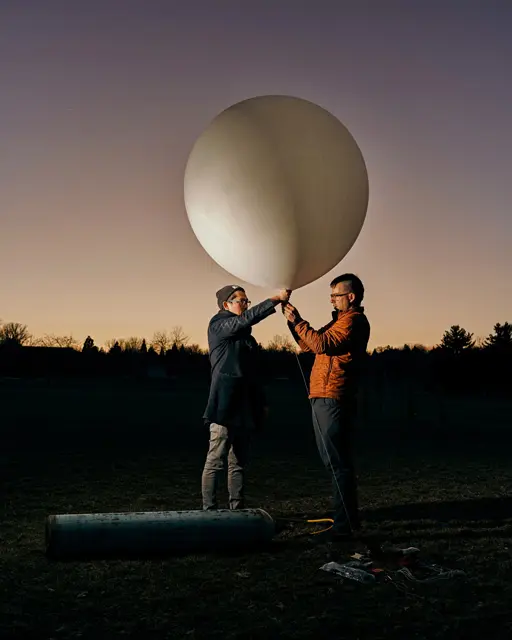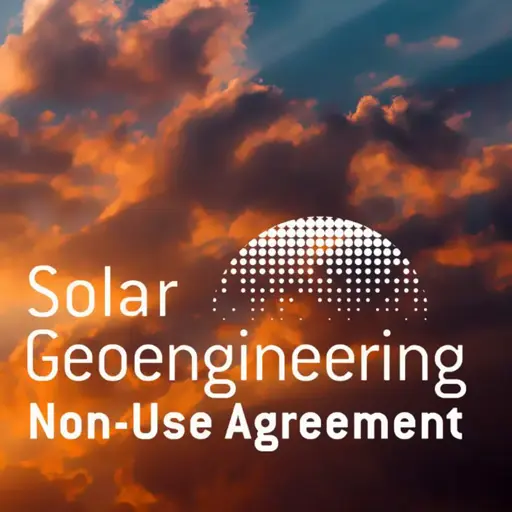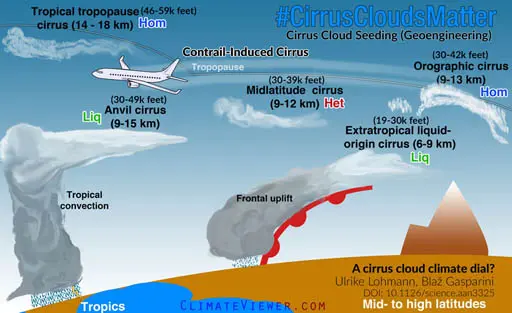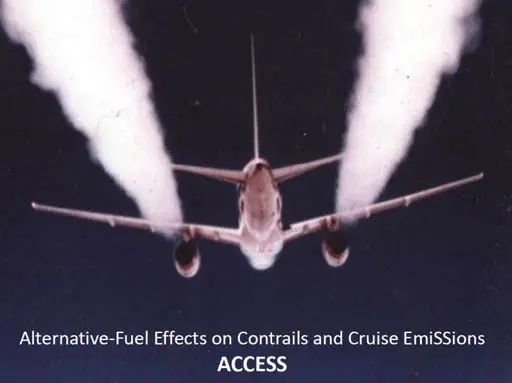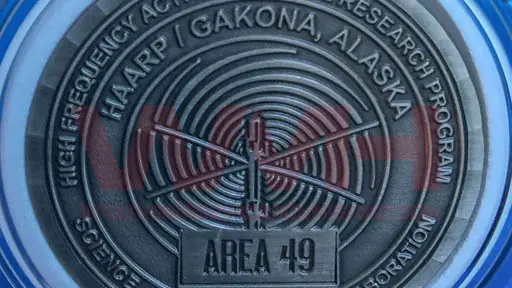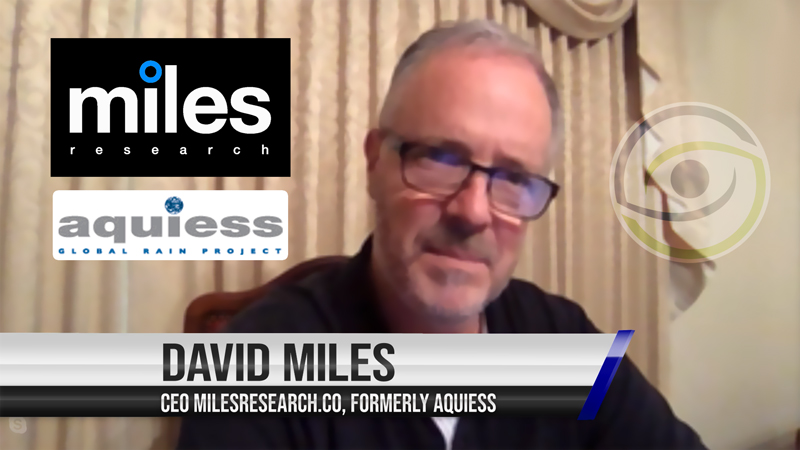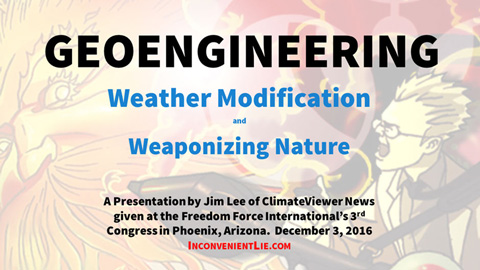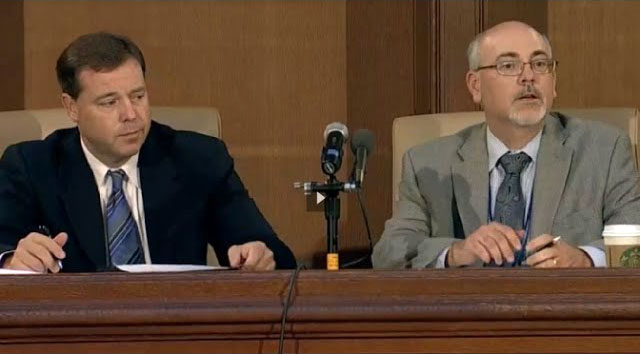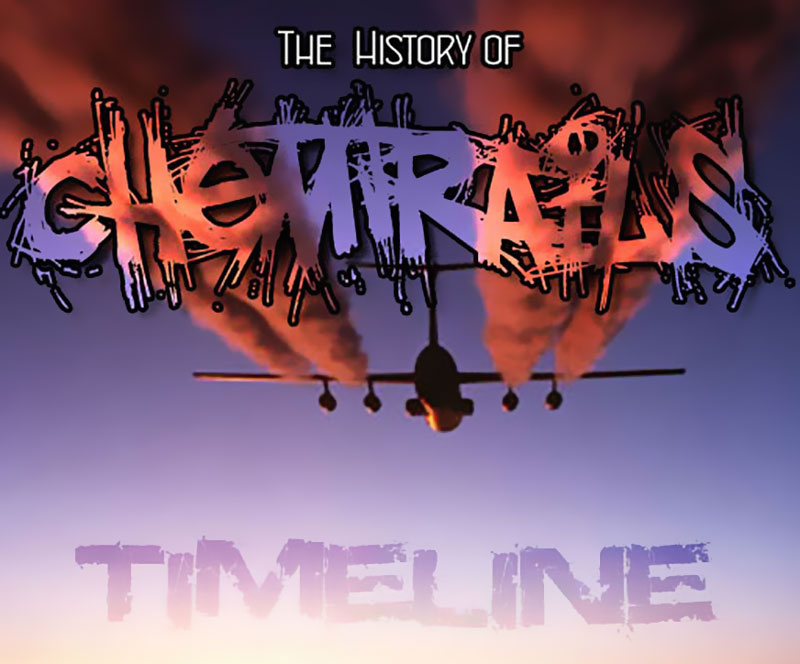
A Tale of Soot, Sulfur, Dirty Lies, and Shady Clouds
The Chemtrail Conspiracy as explained by Wikipedia (which is the most trustworthy spot on teh internetz, ya know) :According to the chemtrail conspiracy theory, long-lasting trails left in the sky by high-flying aircraft are chemical or biological agents deliberately sprayed for sinister purposes undisclosed to the general public.There-in lies the Straw-man, attribution of intentional harmful actions to jet-made clouds.
The term chemtrail is a portmanteau of the words "chemical" and "trail," just as contrail is a contraction of "condensation trail." Believers in the conspiracy theory speculate that the purpose of the claimed chemical release may be for solar radiation management, psychological manipulation, human population control, weather modification, or biological or chemical warfare, and that the trails are causing respiratory illnesses and other health problems. Contrails are formed at high altitudes (5–10 miles or 8–16 kilometers) and if any chemicals were released at such altitude they would disperse harmlessly and fall many hundreds of miles/kilometers away, or degrade before touching the ground.All the evidence shows that Artificial Clouds, or contrails, are not a depopulation scheme. Although 10,000 deaths are directly attributed to jet exhaust each year, global population has steadily risen since the first jet flights and ever since. Each year diarrhea kills around 760,000 children under five, just saying.
What if we removed the “intent” Straw-man and take a discerning look at the facts about these unique jet-made clouds?
What if a chemtrail was a contrail, BUT, the real conspiracy was to focus people on a Straw-man to hide the real-world effects of CONTRAILS?
On the Wikipedia article there is a section titled “Contrails as chemtrails” but no mention or link to the much lengthier “Environmental Impact of Aviation” page. Furthermore, if you image search the term “chemtrails” do you know what you get? Pictures of contrails, big ugly contrails. The only difference is the word you choose to call these clouds, so let’s explore our options:
- Chemtrails
- Contrails
- Persistent Contrails
- Contrail Cirrus
- Aviation Induced Cloudiness (AIC)
- Aviation Induced Cirrus
- Induced Cirrus Cloudiness
- Jet produced cloud cover
- Artificial Cloud
- Global Dimming?
If chemtrails are contrails, and contrails are chemtrails, is this all some sort of semantic ninjitsu? The answer is Yes.
Here is the real conspiracy: Contrails are really screwing up the atmosphere, trapping heat, possibly exacerbating drought conditions under high traffic corridors, and the “aviation industry” does not want you, or anyone else, to know the facts. Even worse, by 2050 ground-based astronomy may be a thing of the past due to jet produced cloud cover, and that may be the tip of a very big iceberg. What will Solar Energy do to combat these clouded skies?
Here is a timeline that will open your eyes to the real Contrail Conundrum, the circumvention of international law and regulation to geoengineer our skies using contrails and sulfur-doped fuels, and the hell we will pay if the plans to use biofuels and Pepto-bismol for Contrail-Control come to pass.
The truth is scarier than fiction.
I will be presenting this information to the EPA at a hearing August 11, 2015.
The Shady History of Jet Trails
THOSE WHO FORGET THE PAST ARE DOOMED TO REPEAT IT!
This extensive list will open your eyes to all things that shall not be mentioned by chemtrail believer nor debunker, nonetheless, these are facts:
April 6, 1948
First airliner with full jet power flownJuly 27, 1949
First purpose-built jet airliner takes flightDecember 6, 1958
New Fuss Raised Over Jet Trails"As you know our entire economy is dependent upon tourist trade, which is predicated on our bright sunshine and warm climate.Recently our sky has resembled a mob of exuberant sky riders performing an aerial circus.
The ‘contrails’ are breaking down into a haze and creating a cloud-like appearance in the sky.
The Air Force, so far, is flabbergasted."

Jet Trails Dim Sun, Palm Beach Gripes
December 1968
Man Making Earth A Bad Place To Live, Professor SaysJets Increase CloudsReid A. Bryson said that jet aircraft contrails were one of the more recent types of cirrus clouds, which are comprised of ice crystals at high altitude.
Where jets are operating today, cirrus clouds have increased by 5% to 10%, Bryson said.
He estimated that if the day came when 300 supersonic transports were in the air at one time, the region of operation of most SST’s “might easily be 100% covered with cirrus clouds.”
The net effect of this would be further to reduce the heating of the earth, and blue skies might become a rarity.
January 1970
Jet Pollution HitUs To Clamp Down On Jet PollutionIllinois and New Jersey officials will not settle pollution suits against the nation's major airlines out of court, despite Tuesday's agreement between the airlines and the federal government to lean up the jet aircraft exhaust.
Representatives of 31 major domestic airlines agreed to install "burner cans" to eliminate most of the smoke from their nearly 1,000 aircraft by 1972.
The government will tell the nation's 43 commercial airlines Tuesday that they must end pollution of the skies with jet engine smoke by 1972 or face punitive legislation from Congress.Jet Smoke:Conquest by CamouflageMainly at issue is the installation of a redesigned combuster - or burner can - on 3,000 existing commercial jet engines of one maker that reportedly account for 70 percent of all smoke pollution from airliners.
Jet Polluters and the Government: What They’ve Done to the Friendly Skies
“Air pollution–1970. Hearings, Ninety-first Congress, second session, on S. 3229, S. 3466 [and] S. 3546” [Full text]
"Mr. Secretary, do you support or do you oppose statutory author- ity to supplement the voluntary aircraft smoke emission agreement?Secretary Volpe. We have supported the idea that some of these things can be done through voluntary effort.
Senator Randolph. And they are being done ?
Secretary Volpe. And they are being done as was proven a few weeks ago when Secretary Finch and I sat down with airline representatives and obtained their agreement to retrofit the present fleet of planes that produces the largest amount or smoke.
Instead of being completed in 1974, as had been originally suggested, they agreed to complete this retrofit operation by 19Y2.
Senator Randolph. Do you believe that it can be done to reduce effectively aircraft emissions ?
Secretary Volpe. On a voluntary basis ?
Senator JRandolph. Yes. “
http://lcweb2.loc.gov/service/ll.old/pdbs/pdbs13a/PDBS_300_test/00017146464/00000341.txt
"The Departments of Transportation and Health, Education, & Welfare today announced that representatives of virtually all the Nation's airlines have agreed to a program of sharply reducing smoke emissions form aircraft jet engines. Secretaries John A. Volpe of Transportation and Robert H. Finch of HEW said top officials of 31 carriers represented have agreed to begin within 90 days the installation of smoke reduction devices on the affected aircraft.https://www.facebook.com/braniffflyingcolors/photos/a.407921352610509.85008.405906479478663/755026064566701/?type=3&theaterDepending upon the availability of the devices, improvement is expected to be noticeable within the next few months, and the program substantially completed by late 1972.
Under the plan, the devices will be installed on engines as they are “down” for routine overhaul—after about 5,000 flying hours each on the average. An estimated 3,000 Pratt & Whitney JT8D engines, mostly on Boeing 727, 737 and McDonnell Douglas DC9 short haul craft, will require modification. The devices are improved combustors (the chambers in which the fuel is ignited) and are manufactured by Pratt & Whitney."
BRANIFF HISTORY TODAY - On this day, Friday, March 6, 1970, Braniff International became one of the first airlines in the industry to make a dedicated effort to combat air pollution. The Texas based airline joined the green effort by installing smoke and pollutant reducing equipment on its Boeing 727 aircraft which made up the majority of the fleet.Braniff Executive Vice President John J. Casey announced that the airline would spend $690,000 USD to install the new pollution fighting equipment. The installation of new smoke reducing combustors on 125 Boeing 727 engines would be completed by the end of 1972. Casey noted that the manufacturer of Braniff’s Boeing 727 engines, Pratt and Whitney, had developed the new smoke reducers as a result of a five year program to find ways to reduce or virtually eliminate smoke from the JT8D engine.
Each of the three engines on Braniff’s 30 727 aircraft, and spares, would be required to be removed from the aircraft, disaasembled and thoroughly tested before they could be approved for return to service. Casey noted that aircraft emissions contribution to pollution was relatively small but that it has not deterred airlines, and manufacturers from finding new methods to cut down on overall pollution.
Secretary of Transportation John A. Volpe and Secretary of Health, Education, and Welfare Robert H. Finch asked that Braniff take part in the pollution reduction program. Braniff was very amenable to taking part in the program and felt that the cost outlay was nominal for the long term aid it would give reducing pollution overall. The airline would be the first carrier to complete the retrofit of its Pratt and Whitney JT8D engines under the new program.
Photo: Braniff’s growing 1971 route system is elegantly superimposed over a photo of a Braniff International Boeing 727 painted in the 1971 Geddis/Harper and George Two Tone Color Scheme. The extensive route system from all US Coasts to the South American Continent are very evident in this rendering. A concerted effort to build the carrier beyond its traditional North and South traffic flow to a complimenting East and West flow can clearly be noted in the 1971 routes. All regions of the Braniff’s US Mainland system provided easy connections to South America.

October 1970
Patent: #3517512: Apparatus for Suppressing Contrails owned by USAFResearch Paper: On the possibility of weather modification by aircraft contrails
“likely contrails are affecting precipitation to a much greater extent than are present deliberate seeding operations.”

September 1971
Study Revealed On Jet PollutionA jet air plane in one landing and takeoff drenches the environment with as much soot as 2,500 automobiles produce in a entire day... soot, gases of carbon monoxide, aldehydes (irritants in smog), hydrocarbons, and nitrogen oxides. 10,000 tons of particulate matter (three airports)

September 1972
Jet Air Pollution CutThere will be a marked aesthetic improvement, since the so-called burner cans cut out something like 70 percent of the visible pollution and thus the familiar "black belch" will be seen no more.

July 1974
Research Paper: Weather Modification by Carbon Dust Absorption of Solar Energy"Growing global population pressures and predicted future food shortages dictate that man fully explore his potential use of solar energy. ... Interest is concentrated on the feasibility of mesoscale (~ 100-300 km) weather modification through solar energy absorption by carbon aerosol particles of the size ~ 0.1 µm [micrometer, 100 nanometer] or less"
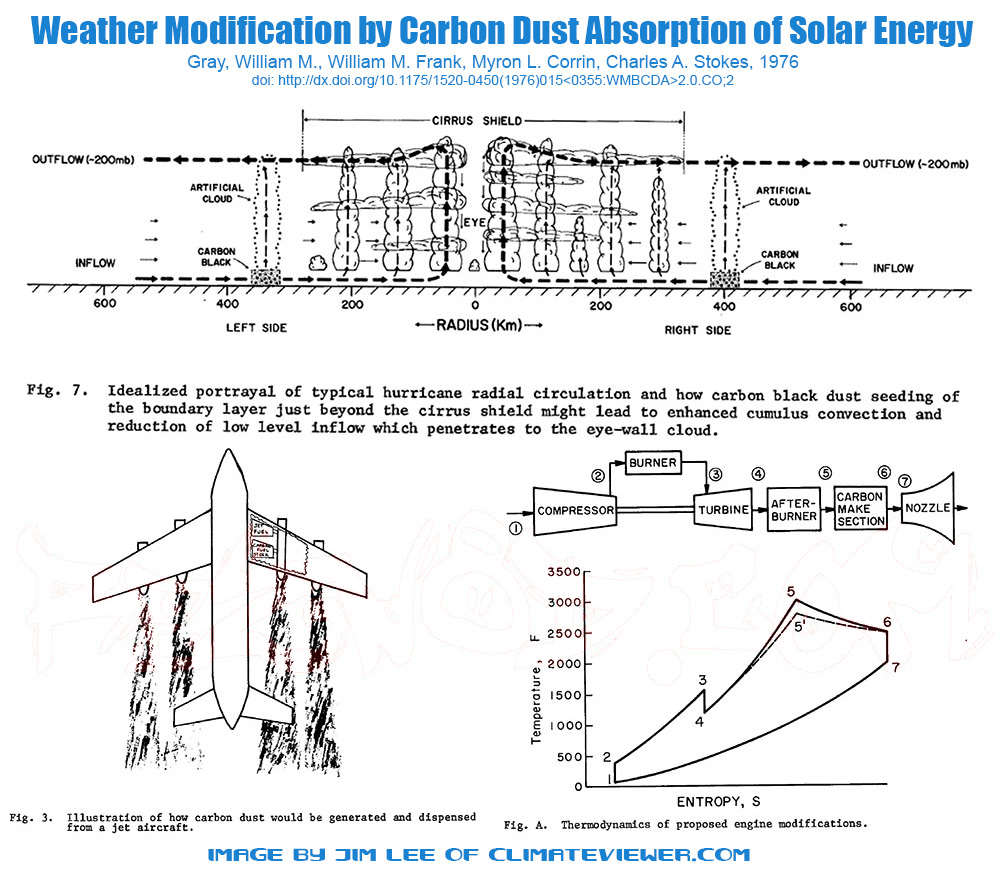
December 1980
Roger O'Neil, NBC News, Champaign, Illinois. Aired on 12/30/1980.Clouded Judgment: Do Jet Contrails Increase Cloud Cover?Research Paper: Effect of Contrail Cirrus on Surface Weather Conditions in the Midwest - Phase IJOHN CHANCELLOR, anchor:
On clear days, you can often see long white lines being traced high in the sky. They are contrails of jet aircraft. They’re actually long, slender clouds. Other men are finding them especially fascinating because the theory is being developed that those long, white lines may be changing our weather for the better. Details from Roger O’Neil.
ROGER O’NEIL, reporting:
The exhaust from jet engines, usually seen as long, thin trails of white clouds behind high-flying jet airplanes, may be a big reason why there are 30 fewer days of sunshine a year in the Midwest now than there were in 1900. The daily range between high and low temperatures has also narrowed. Weather researchers, studying cloud cover in 10 Midwestern states, found a sharp increase in cloudiness with the increase in commercial jet travel, particularly in the main East-West jet corridor, there were even more clouds. A jet produces a contrail or cloud because its exhaust consists primarily of water vapor.
RICHARD SEMONIN (Illinois Institute of Natural Resources): In the absence of natural clouds, given the correct atmospheric condition, jet aircraft in high frequency can almost completely cover the atmosphere, visible atmosphere, with clouds.
O’NEIL: Semonin says, unlike most changes in the atmosphere caused by man, this one is beneficial. Clouds help farmers in the Midwest by blocking the sun. Temperature extremes can damage plants and speed up the evaporation of soil moisture. In the Winter, city people benefit because clouds act as a blanket, preventing warm air from escaping into the atmosphere. No one is trying to make clouds now using jet engines, but this study suggests that jet travel is inadvertently making our days more cloudy and some day, weather researchers may be able to use jets on purpose to change our weather.
September 1982
A High Flying Theory on Acid Rain Problem1987-1993
International Cirrus Experiment, Participants: France, Germany, United Kingdom- Microphysical and Optical Properties of Cirrus and Contrails: Cloud Field Study on 13 October 1989
- Lidar Network Observations of Cirrus Morphological and Scattering Properties during the International Cirrus Experiment 1989: The 18 October 1989 Case Study and Statistical Analysis
April 1990
Hughes Aircraft Company suggests Geoengineering jet fuel.United States Patent 5003186 - Stratospheric Welsbach seeding for reduction of global warming
The particles may be seeded by dispersal from seeding aircraft; one exemplary technique may be via the jet fuel as suggested by prior work regarding the metallic particles. Once the tiny particles have been dispersed into the atmosphere, the particles may remain in suspension for up to one year.
1994-1999
Fuel sulfur content tested as a source of contrail production.Research Paper: Influence of fuel sulfur on the composition of aircraft exhaust plumes: The experiments SULFUR 1–7
April - May, 1996
SUbsonic aircraft Contrail & Clouds Effects Special Study (SUCCESS)The SUCCESS project was conducted from the Kansas State University airport facilities in Salina, Kansas from April 8, 1996 until May 10, 1996, with an extension from May 10 until May 15, 1996 at NASA’s Ames Research Center in Moffett Field, Ca. SUCCESS had several objectives:
- to better determine the radiative properties of cirrus clouds and of contrails so that satellite observations can more reliably measure their impact on the Earth's radiation budget.
- to determine how cirrus clouds form, whether the exhaust from subsonic aircraft presently affects the formation of cirrus clouds, and if the exhaust does affect the clouds whether the changes induced are of climatological significance.
- to develop and test several new instruments.
- to better determine the characteristics of gaseous and particulate exhaust products from subsonic aircraft and their evolution in the region near the aircraft
1996
Research Paper: In Situ Observations of Particles in Jet Aircraft Exhausts and Contrails for Different Sulfur-containing Fuels – PDFAugust 1997
Researh Paper: Global Warming and Ice Ages – Prospects for Physics-Based Modulation of Global ChangeGeoengineering SRM proposed by Edward Teller, Lowell Wood, Roderick Hyde at Lawrence Livermoore National Labs
“It may well be feasible to transport and disperse enough SO2 (Sulfur Dioxide or SO3 or H2SO4) into the stratosphere to produce the desired insolation modulation effect”
March 1998
Researh Paper: First Direct Sulfuric Acid Detection in the Exhaust Plume of a Jet Aircraft in Flight – PDFAugust 1999
Research Paper: Long-Range Weather Prediction And Prevention of Climate Catastrophes – A Status Report.Geoengineering Models by Edward Teller, Lowell Wood, Roderick Hyde, Ken Caldeira
November 2000
Research Paper: Ultrafine Particle Size Distributions Measured in Aircraft Exhaust Plumes – PDFSeptember 11, 2001
Research Paper: Regional Variations in U.S. Diurnal Temperature Range for the 11–14 September 2001 Aircraft Groundings: Evidence of Jet Contrail Influence on ClimateAll planes grounded for three days due to terrorist attack. Contrails seen on satellite from six fighter jets cover more than 11,000 square miles. From The Contrail Effect:
At least that was the case until September 11, 2001. For the first time since the jet age began, virtually all aircraft were grounded over the United States for three days. Even as they tried like the rest of us to absorb the enormity of the terrorist attacks, climatologists realized they had an unprecedented opportunity to scrutinize individual contrails, and several studies were quickly launched.One study looked at the aforementioned contrails that grew to cover 7,700 square miles. Those condensation trails arose in the wake of six military aircraft flying between Virginia and Pennsylvania on September 12, 2001. From those isolated contrails, unmixed as they were with the usual dozens of others, Patrick Minnis, a senior research scientist at NASA’s Langely Research Center, and his colleagues were able to gain valuable insight into how a single contrail forms. Those once-in-a-lifetime data sets are so useful that Minnis is about to analyze them again in an expanded study.
Another study that took advantage of the grounding gave striking evidence of what contrails can do. David Travis of the University of Wisconsin-Whitewater and two colleagues measured the difference, over those three contrail-free days, between the highest daytime temperature and the lowest nighttime temperature across the continental U.S. They compared those data with the average range in day-night temperatures for the period 1971-2000, again across the contiguous 48 states. Travis’s team discovered that from roughly midday September 11 to midday September 14, the days had become warmer and the nights cooler, with the overall range greater by about two degrees Fahrenheit.
These results suggest that contrails can suppress both daytime highs (by reflecting sunlight back to space) and nighttime lows (by trapping radiated heat). That is, they can be both cooling and warming clouds. But what is the net effect? Do they cool more than they warm, or vice versa? “Well, the assumption is a net warming,” Travis says, “but there is a lot of argument still going on about how much of a warming effect they produce."

July 2004
Close To Reality: Jet Fuel Made From Coal .July 2006
Sky Graffiti Warming Up Earth? CBS News, Aired July 29, 2006 2:19 PMContrails are lines of exhaust left by planes. It can be fun to watch them as they crisscross the sky. But as Anthony Mason reports, some people think they could spell trouble for the planet.
New research suggests that jet exhaust is four times better at trapping heat than ground emissions with contrails playing a critical role. Contrails form at high altitudes when hot jet engines pass through cold moist air. The clouds spread out trapping heat rising from the surface.
August 2006
Stratospheric sulfur injection to reflect sunlight
Research Paper: Albedo Enhancement by Stratospheric Sulfur Injections – A Contribution to Resolve a Policy Dilemma2007
George W. Bush mandates "Greenwashing" of the fossil fuel industry and the future of jet fuel gets real weird, chicken fat weird.- Greenwashing (a compound word modelled on "whitewash"), or "green sheen," is a form of spin in which green PR or green marketing is deceptively used to promote the perception that an organization's products, aims or policies are environmentally friendly.
U.S. Energy Independence and Security Act of 2007

Research Presentation: Biodiesel from Biodiesel
More information on aviation biofuels: The Chemical Trail Contrail-versy and Contrails, Geoengineering, and the Single Fuel Concept and Biofuels could not help climate change
February 2007
Scientist takes out the conspiracy out of airplanes contrails
2008
93'000 flights per day, watch this mind blowing animation!This animation shows all scheduled flights over a 24h period (based on 2008 data). Every day 93'000 flights are starting from approx. 9'000 airports. At all time there are between 8'000 and 13'000 airplanes in the air. This animation was produced to be shown on the high definition 3D-Globe "Orbitarium" in Technorama - The Swiss Science Center in collaboration with Institute of Applied Information Technology InIT, Zurich University of Applied Sciences, Winterthur.
February 2008
Department of Homeland Security and MIT team up to steer hurricanes with Carbon Black Aerosol (soot)Collaborative Research: On Hurricane Modification by Carbon Black Dispersion: Methods, Risk Mitigation, and Risk Communication – Dr. Moshe Alamaro
This presentation focused on the use of carbon black aerosol (CBA) to selectively heat parts of the atmosphere by dispersion of CBA above a hurricane. This scenario is motivated by the fact that the energy cycle of a hurricane may be represented as a Carnot heat engine, and reducing the contrast between “hot and cold reservoirs” should reduce the power of a hurricane and the CBA will absorb incident solar radiation to warm the “cold reservoir.” Objectives of this study are to demonstrate direct control of the intensity or track of simulated hurricanes; to quantify amounts of CBA needed; to enhance understanding of the web of physical processes that power hurricanes in relation to the overall thermodynamics of hurricanes; to determine optimal dispersion scenarios; to enhance understanding of the radiative and flow properties of CBA; to establish causes, effects, and outcomes of CBA dispersion; and to develop methods to communicate risk to the public of large-scale weather modification efforts. To accomplish all this we will employ a diverse set of tools and methods, including a high-resolution mesoscale numerical weather prediction model to simulate hurricanes and the effect of adding CBA; engineering tools to develop manufacturing, transport, and dispersion strategies; and both semi-structured interviews and structured surveys to capture expert information and lay public perceptions.

April 21, 2008
Doped jet fuel discussed at Weather Modification Conference. From the Extended Abstract:Use of commuter aircraft with their jet fuels doped with aerosol generators is another possibility. Also the use of UAVs or blimps for aerosol dispersal could be considered. Potential adverse consequences, however, are likely including impacts on precipitation, local cold temperature extremes (which would also impact fossil fuel demands) and the hydrological cycle. ...3.4 Seeding cirrus clouds or making more contrails
On an annual average clouds cover between 55 to 60% of the earth (Matveev 1984) and much of that cloud cover consists of middle and high clouds. It is thought that globally cirrus clouds contribute to warming of the atmosphere owing to their contribution to downward transfer of LW radiation. In other words they are a greenhouse agent. Human activity is already modifying the cirrus clouds through the production of aircraft contrails. Kuhn (1970) found that contrails depleted solar radiation and increased downward LW radiation but during the daytime their shortwave influence dominates and they contribute to a net surface cooling. Kuhn (1970) calculated that if contrails persist over 24h their net effect would be cooling. Others have concluded that they lead to surface warming (Liou et al. 1991; Schumann 1994) but Sassen (1997) notes that the sign of the climatic impact of contrails is dependent upon particle size. Global estimates of the effects of contrails are they contribute to a net warming (Minnis et al. 2004).
It has even been proposed to seed in clear air in the upper troposphere to produce artificial cirrus which would warm the surface enough to reduce cold-season heating demands (Detwiler and Cho 1982). So the prospects for seeding cirrus to contribute to global surface cooling do not seem to be very good.
The only approach that might be feasible is to perform wide-area seeding with soot or carbonaceous aerosols which would absorb solar radiation and warm cirrus layers enough to perhaps dissipate cirrus clouds (a semi-direct effect). This strategy would be similar to that proposed by Watts (1997) and Crutzen (2006) for implementation in the stratosphere. As noted by Crutzen (2006) only 1.7% of the mass of sulfur is needed to produce a similar magnitude of surface cooling. Application at cirrus levels in the upper troposphere would have the double benefit of absorbing solar radiation thus contributing to surface cooling and dissipating cirrus clouds which would increase outgoing longwave radiation. Of course, the soot that becomes attached to ice crystals will reduce the albedo of cirrus thus countering the longwave warming effect to some degree. In addition, there is evidence that soot particles can act as ice nuclei, thus contributing to greater concentrations of ice crystals by heterogeneous nucleation but possibly reduced crystal production by homogeneous nucleation (DeMott et al. 1994; Kärcher et al. 2007). Thus it would be best to engineer carbonaceous aerosol to be ineffective as IN.
The possible adverse consequences of such a procedure can only be conjectured at this time but are mostly likely to impact the hydrological cycle. Complex chemical, cloud-resolving, and global models are required to evaluate the feasibility of this approach and to estimate possible adverse consequences. The feasibility of this approach in terms of implementation strategies is probably comparable to seeding sulfates in the lower stratosphere. The costs would be similar to Crutzen’s estimates for stratospheric seeding.
April 1, 2009
Research Paper: Modification of cirrus clouds to reduce global warming“dissolved or suspended in their jet fuel and later burned with the fuel to create seeding aerosol, or (2) injected into the hot engine exhaust, which should vaporize the seeding material, allowing it to condense as aerosol in the jet contrail”Greenhouse gases and cirrus clouds regulate outgoing longwave radiation (OLR) and cirrus cloud coverage is predicted to be sensitive to the ice fall speed which depends on ice crystal size. The higher the cirrus, the greater their impact is on OLR. Thus by changing ice crystal size in the coldest cirrus, OLR and climate might be modified. Fortunately the coldest cirrus have the highest ice supersaturation due to the dominance of homogeneous freezing nucleation. Seeding such cirrus with very efficient heterogeneous ice nuclei should produce larger ice crystals due to vapor competition effects, thus increasing OLR and surface cooling. Preliminary estimates of this global net cloud forcing are more negative than −2.8Wm−2 and could neutralize the radiative forcing due to a CO2 doubling (3.7Wm−2). A potential delivery mechanism for the seeding material is already in place: the airline industry. Since seeding aerosol residence times in the troposphere are relatively short, the climate might return to its normal state within months after stopping the geoengineering experiment. The main known drawback to this approach is that it would not stop ocean acidification. It does not have many of the drawbacks that stratospheric injection of sulfur species has.
April 7, 2009
IPCC Radiative Forcing estimates do not account for contrails that have fanned out, turning into cirrus clouds. Epic research paper points out the obvious.Research Paper: Aviation and global climate change in the 21st century (Lee et al 2009)
AIC [aviation induced cloudiness] RFs for all the 2020 forecast and 2050 scenarios were scaled by fuel usage from the 2005 AIC RF value but are not included in the RF totals presented here. The methods by which the 2050 RFs have been calculated are simplified, particularly for O3, CH4 and contrail impacts. As such, the results presented here are indicative and should be followed up with a larger-scale international multimodel effort. In the case of AIC, we highlight that no process-based model has yet been presented in the literature and there is an urgent need for such modelling.

March 2009
COntrails Spreading Into Cirrus (COSIC)
Research Paper: A case study of the radiative forcing of persistent contrails evolving into contrail-induced cirrus - PDFCOntrails Spreading Into Cirrus (COSIC) aims to quantify the climate role of line shaped contrails caused by air-traffic that you often see in the sky. In particular, we aim to understand how they can sometimes spread into larger cloud decks. Such spreading contrails could add significantly to the CO2-driven climate impacts of aviation, but estimates of their effect are very uncertain.
COSIC has made direct measurements of spreading contrail using dedicated flights over the UK with the BAe-146-301 large Atmospheric Research Aircraft. These measurements are now being used to incorporate spreading contrails into models of climate change. COSIC also aims to understand various stakeholder needs for aviation-climate science and communicate science results in the most appropriate way to the industry, policy makers and the public.
COSIC is a Natural Environment Research Council (NERC) sponsored project led by the University of Leeds, collaborating with the Universities of Manchester and Reading, the UK Met Office, the Facility For Airborne Atmospheric Measurements (FAAM) and the Institut für Physik der Atmosphäre, DLR, Germany.
The radiative forcing due to a distinct pattern of persistent contrails that form into contrail-induced cirrus near and over the UK is investigated in detail for a single case study during March 2009. The development of the contrail-induced cirrus is tracked using a number of high-resolution polar orbiting and lower-resolution geostationary satellite instruments and is found to persist for a period of around 18 h, and at its peak, it covers over 50,000 km2. The shortwave (SW) and longwave (LW) radiative forcing of the contrail-induced cirrus is estimated using a combination of geostationary satellite instruments, numerical weather prediction models, and surface observation sites. As expected, the net radiative effect is a relatively small residual of the much stronger but opposing SW and LW effects, locally totaling around 10 W m−2 during daylight hours and 30 W m−2 during nighttime. A simple estimate indicates that this single localized event may have generated a global-mean radiative forcing of around 7% of recent estimates of the persistent contrail radiative forcing due to the entire global aircraft fleet on a diurnally averaged basis. A single aircraft operating in conditions favorable for persistent contrail formation appears to exert a contrail-induced radiative forcing some 5000 times greater (in W m−2 km−1) than recent estimates of the average persistent contrail radiative forcing from the entire civil aviation fleet. This study emphasizes the need to establish whether similar events are common or highly unusual for a confident assessment of the total climate effect of aviation to be made.
May 2009
Research Paper: The Benefits, Risks, and Costs of Stratospheric Geoengineering“dispersing gases from planes .. addition of sulfur to the fuel .. release the aerosol through the exhaust system ... release the sulfur from its own tank within the plane”

March 4, 2010
Contrail Mitigation options discussed at ICAO Colloqium on Aviation and Climate ChangeContrail cirrus contributes a large fraction to the aviation induced climate impact (comparable to 50 years of aviation C02)Satellite data analyses suggest observable impact of aviation on cirrus cover and radiation fluxes.
The climate impact of aviation induced contrail cirrus depends on aircraft properties (e.g. soot emissions) and routing (avoid cirrus forming regions) [known as Ice-Supersaturated Regions or ISSR]
Both aspect offer the potential for aviation to reduce the climate impact of aviation (less soot emissions, less warming and more cooling contrails; predictable for operational planning)
Climate Optimized Routing of Flights (to avoid contrails)
A first test version of climate optimised flight planning (only contrails and fuel burn = CO2) is already implemented within the Lufthansa Systems tools (UFO)A more comprehensive solution will be tested during the next few years (REACT4C)

More info:
- Project REACT4C “Reducing Emissions from Aviation by Changing Trajectories for the benefit of Climate” REACT4C on CORDIS
- Centre for Aviation Transport and the Environment (Omega)
- Ice-Supersaturated Regions (ISSR)
- Formation flying civilian airliners? Flying planes like birds to save on the gas bill, no joke.
- Climate compatible Air Transport System (CATS)
- Climate Optimized Routing of Flights
- Environmentally Responsible Aviation (ERA)
- NASA Langley Cloud and Radiation Group
- Cloud-Aerosol Lidar and Infrared Pathfinder Satellite Observations (CALIPSO)
- Next Generation Air Transportation System (NextGen)
- Future Aircraft Traffic Management Concepts Evaluation Tool (FACET) •[PDF]
- FAA Aviation Environmental Tool Suite
March 10, 2010
Case Orange - Belfort Group Chemtrail Report70 pages. Case Orange report (resumé version) 328 pages. Case Orange report (complete version)
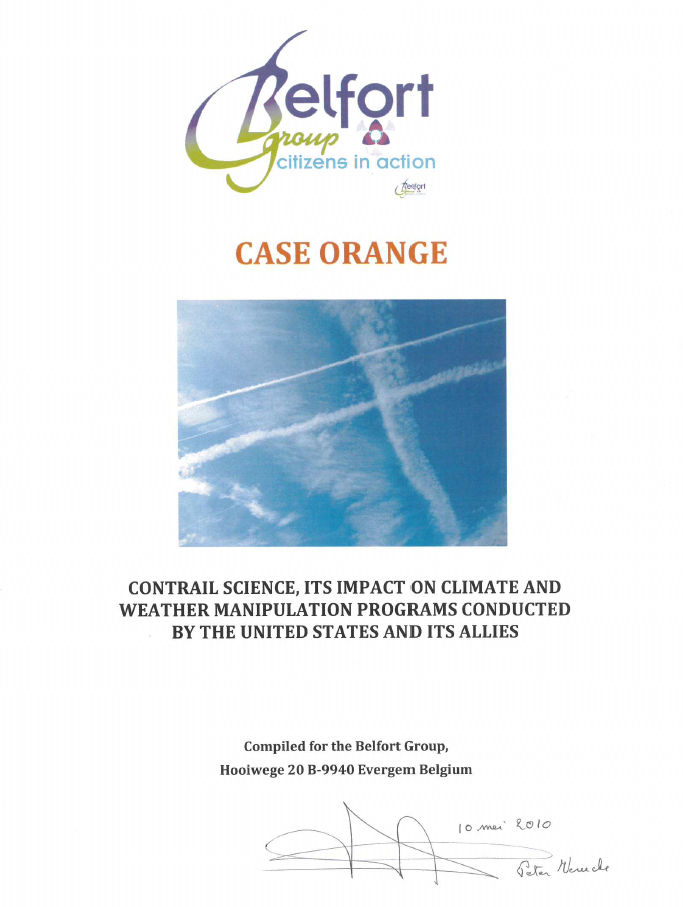
March 2011
Research Paper: Atmospheric science: Seeing through contrailsContrails formed by aircraft can evolve into cirrus clouds indistinguishable from those formed naturally. These 'spreading contrails' may be causing more climate warming today than all the carbon dioxide emitted by aircraft since the start of aviation.

June 2011
Research Presentation: Design of Aircraft Trajectories based on Trade-offs between Emission Sources Ninth USA/Europe Air Traffic Management Research and Development Seminar (ATM2011) Final Paper dated April 14, 2011There are indications that persistent contrails can lead to adverse climate change, although the complete effect on climate forcing is still uncertain. A flight trajectory optimization algorithm with fuel and contrails models, which develops alternative flight paths, provides policy makers the necessary data to make trade-offs between persistent contrails mitigation and aircraft fuel consumption.

July 2011
David Keith's research paper: Geoengineering Cost Analysis by Aurora Flight SciencesHowever, injection of the sulfuric acid into the exhaust in this way may represent an efficient method by which to disperse it into the atmosphere. This analysis suggests that even at the maximum sulfuric acid release rate under consideration (24.9 kg/s) the thrust level produced by the engine is not adversely affected (1.05 thrust ratio).

August 21, 2011
Do Planes Trigger Rains? Naked Scientists PodcastThe rain in Spain falls mainly on the "plane". Or so the saying goes, but new research has confirmed that aeroplanes do cause clouds to dump their contents prematurely, often around airports, and in this week's show we explore this weather-altering effect of aviation.
November 7, 2011
United Airlines Flies First U.S. Commercial Advanced Biofuel Flight"United is taking a significant step forward to advance the use of environmentally responsible and cost-efficient alternative fuels," said Pete McDonald, United's executive vice president and chief operations officer. "Sustainable biofuels, produced on a large scale at an economically viable price, can one day play a meaningful role in powering everyone's trip on an airline."United marks nation’s first biofuel-powered commercial flight - VideoToday’s flight demonstrates United’s commitment to sustainable biofuels and making progress toward enhancing energy security, diversity of our fuel supply and a reduction in lifecycle greenhouse gas emissions compared to traditional fossil fuels.
http://www.youtube.com/watch?v=YbvfyKIfqqI
November - December 2011
The birth of Ultra-Low Sulfur Jet Fuel (ULSJ fuel)Research Presentation: NASA Alternative Fuel Research
Commercial Aviation Alternative Fuels Initiative (CAAFI) - 2011 General Meeting
What? The 2011 General Meeting and Expo of the Commercial Aviation Alternative Fuels Initiative® (CAAFI®) was held November 30-December 1, 2011, at the Georgetown University Conference Center and Hotel in Washington, DC. The meeting was organized by CAAFI’s four co-sponsors in cooperation with conference organizer Kallman Worldwide, Inc. For the first time the General Meeting included an adjacent Expo with displays by 32 exhibitors including fuel producers, federal agencies, state initiatives and support service providers.Why? Since 2006, CAAFI has been leading efforts to develop and deploy sustainable alternative fuels for commercial aviation. There has been dramatic progress since CAAFI’s last General Meeting in 2009. In the intervening years the industry has moved from alternative fuels as an aspirational concept to achieve environmental gain, security of supply, and improved economics, to the emergence of sustainable alternative fuels as an operational reality. Following recent fuel approvals, government support for deployment and the beginning of alternative jet fuel passenger flights by United Airlines and Alaska Airlines, the aviation sector is on the cusp of a major expansion of operational use of sustainable alternative jet fuels in the United States and globally. This meeting gathered global government and industry stakeholders to share progress and opportunities, and set goals and strategies for developing and deploying alternative jet fuels for commercial and military aviation building on the progress achieved to date.

February 2012
INCITE Researchers Explore How Aircraft Contrails Can Impact ClimateContrails are ice clouds that form by condensation of water vapor exhaust from aircraft engines and develop further in the aircraft wake as they are entrained by the airplane trailing vortices (see Fig. 1). When contrails spread to form cirrus clouds (see Fig. 2), they can persist for hours and extend over areas of several square kilometers. These “contrail cirrus,” which artificially increase Earth’s cloudiness and become almost indistinguishable from natural cirrus, are among the most uncertain contributors to the Earth’s radiative forcing. (Radiative forcing is defined as the change of the net radiating flux resulting from changes in the atmospheric composition. A measure of the perturbation of Earth-atmosphere energy budgets, it is widely used as a climate metric.)

March 23, 2012
Geoengineering paper proposes the USAF Civil Reserve Air Fleet (CRAF) convert passenger Boeing 747's to deliver chemicals for Solar Radiation Management.Research Paper: Cost analysis of stratospheric albedo modification delivery systems
The authors acknowledge helpful commentary from David Whelan and Robert Parks. Funding for this work was provided by [BILL GATES] the Fund for Innovative Climate and Energy Research (FICER), see http://keith.seas.harvard.edu/FICER.html. The work by Aurora Flight Sciences was funded as a consulting contract by FICER funds administered through the University of Calgary under the direction of David Keith.Determining the Boeing 747 Conversion Costs for the Civil Reserve Air Fleet Enhancement Program
The Civil Reserve Air Fleet (CRAF) Enhancement Program provides a contractual arrangement between the Air Force and major U.S. airlines for modifying Boeing 747 and DC-10 passenger aircraft for use as convertibles--aircraft capable of carrying military cargo in an emergency, while providing commercial passenger service in peacetime. The airlines will incur several costs as a result of modifying these aircraft, each of which must be reimbursed by the Air Force. The costs incurred by the airlines include: net revenue lost during the eight week modification period; the modification cost: increased operating costs for 16 years due to the higher weight and increased value of a convertible aircraft; and the opportunity cost of retaining a modified aircraft for 16 years. Each of these costs were calculated for the Boeing 747, with the following results: $3,014,564 net loss of revenue during modification; $14,300,000 modification cost; 46,637,015 increased operating costs for 16 years; and no opportunity cost. These costs total $23,951,579, and represent the amount of reimbursement from the Air Force for each Boeing 747 conversion. (Author)USAF Civil Reserve Air Fleet (CRAF) Fact Sheet
The following air carriers are members of the Civil Reserve Air Fleet (subject to change monthly)International Segment - Long Range Section: ABX Air - Air Transport International - American Airlines - Atlas Air - Delta Air Lines - Federal Express Airlines - Hawaiian Airlines - Kalitta Air Cargo - National Air Cargo Group dba - National Airlines - Omni Air International - Polar Air Cargo - Sky Lease I - Southern Air - United Air Lines - United Parcel Service - US Airways
International Segment - Short Range Section: Alaska Airlines - American Airlines - Delta Air Lines - Jet Blue Airways - Lynden Air Cargo - Miami Air International - MN Airlines dba Sun Country - Northern Air Cargo - United Air Lines
National Segment - Domestic Section: Allegiant Air - Southwest Airlines

September 2012
Stratospheric passenger flights are likely an inefficient geoengineering strategySolar radiation management with stratospheric sulfur aerosols has been proposed as a potential geoengineering strategy to reduce global warming. However, there has been very little investigation on the efficiency of specific injection methods suggested. Here, we show that using stratospheric passenger flights to inject sulfate aerosols would not cause significant forcing under realistic injection scenarios: even if all present-day intercontinental flights were lifted above the tropopause, we simulate global surface shortwave radiative forcings of − 0.05 W m−2 and − 0.10 W m−2 with current and five times enhanced fuel sulfur concentrations, respectively.
October 2012
Commercial aircraft 'not viable strategy' for geoengineering
Employing commercial aircraft to inject sulphur into the stratosphere is not a viable strategy, according to Finnish researchers. Even if planes flew at higher altitudes and emitted ten times the current legal limit of sulphur, the cooling effect would be lower than if the same amount of sulphur was injected over the tropics.
February 2014
US Defense Department switching to civilian-grade jet fuelWith testing of civilian-grade jet A with additives nearly complete, 36 military bases in the US have converted away from the military-grade JP-8. The remaining more than 230 locations are slated to convert in 2014.“For the conversion in the continental United States, the demonstration phase of the conversion is essentially completed,” said Susan Lowe, a spokeswoman for the Defense Logistics Agency Energy, the fuel-buying arm of the Department of Defense. “Virtually all DOD aviation and ground equipment has been tested and (is) ready for the use of commercial specification jet A fuel with additives.”The two main exceptions to the conversion are jet A-1, a civilian grade nearly identical to JP-8 that is commonly used by the military outside of the US, and JP-5, which is mainly used on aircraft carriers. Jet A-1 has the same flash point as jet A but a lower freezing point: jet A freezes at minus 40 degrees Celsius and A-1 freezes at minus 47 degrees Celsius. The requirement of an antistatic additive for A-1 is another major difference, while JP-8 further requires corrosion inhibitor and icing inhibitor additives.The DoD began the initiative in 2009 with demonstrations at four Air Force locations.
March 2014
Academy of Finland's FICCA funded COOL Project“Another technique examined was the use of commercial passenger aircraft flying at high altitudes to inject sulphate aerosols, emitted by aviation fuel, into the stratosphere. This would mimic a volcanic eruption, during which sulphur compounds are released into the stratosphere. They reflect solar radiation and thereby have a clear cooling effect on the climate. No previous calculations are available on the viability of using commercial flights in this way.“In terms of efficient geoengineering strategies, this technique proved unviable. It would work best close to the equator, but little air traffic operates there – commercial flight routes are operated further north. In addition, current commercial aircraft are unable to fly high enough in the stratosphere. We would need new planes with large amounts of sulphur added to their fuel,” Laaksonen says.
Commercial aircraft could be used to deliever sulfate into stratosphere by increasing fuel sulfur content and the flight altitude of inter-continental flights • The sulfur content of the fuel should be increased to about 50 times the current level to have a significant cooling effect • The cooling effect would be confined to the Northern Hemisphere
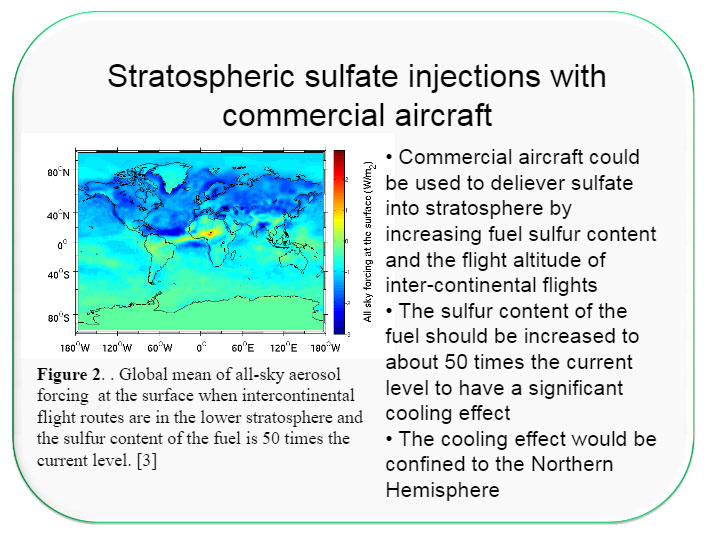
December 4, 2012
Arctic Methane Emergency Group (AMEG) demands global Geoengineering in "Strategic Plan" sent to all world leaders. Claiming methane from the arctic could erupt rapidly, killing everyone on the planet, they demand immediate action which includes spraying chemicals from planes and using contrails to cool the world.As for appropriate interventions, there are a number of things to do immediately in parallel:Geoengineering actions for enhancing the reflection of sunlight back into space and for increasing the thermal energy emitted into space.
- Consider practices and regulations that are having, or risk having, a heating effect on the Arctic. A postponement of drilling in the Arctic would be sensible, because of inevitable escape of methane but also because of the risk of blowout with or without oil spill.
- Try to maintain or even enhance the current cooling effect from currently emitted sulphate aerosols in the troposphere at mid to high northern latitudes. For example the regulation to ban bunker fuel for ships should be relaxed while encouraging continued use of bunker fuel where the resulting aerosol emissions might be beneficial. Reduction of sulphate aerosol ‘pollution’ will be unpopular with many environment groups, but the priority to cool the Arctic has to be established.
- Establish the positive and negative net forcing from contrails, and encourage flight paths of commercial airplanes to reduce positive or increase negative net forcing. The ban on polar flights, lifted recently, should be reintroduced.
- Reduce black carbon into Arctic. Make for preparedness to fight tundra fires in Arctic and sub-Arctic.
- Find ways to remove black carbon from coal fired power stations, while allowing or compensating for the cooling effect that their aerosol emissions would be producing without the scrubbing out of sulphur compounds.
- Prepare the supply and logistics for spraying aerosol precursor in large quantities, preferably into the lower stratosphere, for deployment by next March or April (not sooner because the risk of ozone depletion). Of course, possible negative impacts have to be considered before large scale deployment, but it is worth being fully prepared for such deployment on the assumption that this technique can be made to work effectively.
- Develop and test the deployment of suitably reflective particles, of such materials as TiO2, as alternative or supplement to sulphate aerosol. Prepare for large scale deployment.
- Finance the development of, and deployment capability for, marine cloud brightening, with a view to deployment on a large scale in spring 2013 - assuming that is the earliest conceivable time. The main technical problem seems to be with the jets, so experts from major companies in the ink-jet technology field need to be brought in. Boats and land installations need to be kitted out.
- Finance the development and deployment capability for cirrus cloud removal, since this is a promising technique. Suitable chemicals need to be identified/confirmed, with stock-piling of these cloud seeding chemicals. Aircraft need to be kitted out to spray these chemicals.
- Finance brainstorming sessions for geoengineering, with top scientists and engineers, such as to suggest further measures, improvements to above techniques and the development of other intervention ideas.
- Finance the research and trials of all promising techniques for helping to cool the Arctic, including the three geoengineering techniques above. Update Earth System models to deal with the actualities of sea ice retreat, such that the effects of different techniques can be modelled and optimum joint deployment strategies established.
February - April 2013
Jet Biofuel Enlisted for Contrail Control
Contrails might be a punch line in the culture these days, thanks to the imaginative folks who have rechristened them “chemtrails” and embroidered them with elaborate theories involving government and corporate misdeed.But contrails are pretty serious business for a less conspiratorial reason: scientists believe these ice clouds generated by water exhaust gases from aircraft engines could have a real impact on the climate, perhaps by cooling temperatures during the day and warming them at night.
When contrails spread to form cirrus clouds, they can persist for hours and extend over areas of several square kilometers. These “contrail cirrus,” which artificially increase Earth’s cloudiness and become almost indistinguishable from natural cirrus, are among the most uncertain contributors to the Earth’s radiative forcing. (Radiative forcing is defined as the change of the net radiating flux resulting from changes in the atmospheric composition. A measure of the perturbation of Earth-atmosphere energy budgets, it is widely used as a climate metric).
Joint NASA/FAA Aviation Climate Change Research Initiative (ACCRI) Program
NASA Begins Flight Research Campaign Using Alternate Jet Fuel
ACCESS - Alternative-Fuel Effects on Contrails and Cruise EmiSSions Flight ScheduleNASA DC-8 February 18, 2013 - March 15, 2013 April 4, 2013 - April 12, 2013

More Info
- Chicken fat fuel emissions look cleaner, greener
- Sustainable Alternative Jet Fuels
- INCITE Researchers Explore How Aircraft Contrails Can Impact Climate
- The Commercial Aviation Alternative Fuels Initiative (CAAFI)
- Continuous Lower Emissions, Energy, and Noise (CLEEN) Program
- Alternative Aviation Fuels Broad Agency Announcement (BAA)
- Partnership for Air Transportation Noise and Emissions Reduction (PARTNER)
- Airport Cooperative Research Program (ACRP)
June 2013
Scientists don't know jack about aerosols.Research Paper: Dust ice nuclei effects on cirrus clouds in ECHAM5-HAM
Aerosol-cloud interactions are one of the main uncertainties in climate research. Up to now a lot of research has been conducted on aerosol-cloud interactions in warm clouds. The impact of aerosols on ice or mixed-phase clouds is much less understood. Cirrus clouds in an unpolluted environment are assumed to form mainly via homogeneous freezing. The presence of heterogeneous ice nuclei can lead to earlier ice crystal formation and change the microphysical properties of cirrus clouds. Recent box model studies even suggest that heterogeneous freezing can suppress homogeneous freezing, if several conditions are fulfilled. Most likely this would lead to cirrus clouds containing fewer and larger ice crystals. If homogeneous and heterogeneous freezing compete either freezing mechanism may dominate depending mainly on vertical velocity and number density of ice nuclei. Thus, it is not clear yet how number and size of ice crystals are affected.
May 2014
ACCESS II Alternative Jet Fuel Flight Tests BeginNASA to study the effects on emissions and contrail formation of burning alternative jet fuels
Research Paper: Impact of Aviation on Climate: FAA’s Aviation Climate Change Research Initiative (ACCRI) Phase II
In particular, the use of renewable fuels will further decrease RF associated with sulfate aerosol and black carbon. While this focused ACCRI program effort has yielded significant new knowledge, fundamental uncertainties remain in our understanding of aviation climate impacts. These include several chemical and physical processes associated with NOx-O3-CH4 interactions and the formation of aviation-produced contrails and the effects of aviation soot aerosols on cirrus clouds as well as on deriving a measure of change in temperature from RF for aviation non-CO2 climate impacts – an important metric that informs decision-making.

ACCESS-II Flight Schedule
Equipment Installation May 1-5, 2014
Videos
Alternative Fuel Effects on Contrails and Cruise Emissions Chase Plane Project
Alternative Fuel Effects on Contrails and Cruise Emissions Data Timeseries
July 2014
ACCESS-II testing JP8 DOPED WITH SULFUR, is that any surprise?
Research Presentation: In-Situ Measurements of Contrail Properties Measured During the 2013-2014 ACCESS ProjectThree different fuel types are discussed: a low-sulfur JP-8 fuel, a 50:50 blend of JP-8 and a camelina-based HEFA fuel, and the JP-8 fuel doped with sulfur.
January 2015
Rogue GeoengineeringDian Seidel tells Weather Modification Conference members: “We can not detect Rogue Geoengineering”
Research Paper: Detection limits of albedo changes induced by climate engineering. Nature Climate Change, 4, 93-98. doi:10.1038/NCLIMATE2076.
“In summary, although very large albedo increases are potentially detectable, interannual albedo variability overwhelms the maximum conceivable increases associated with the leading proposed SRM schemes.”Cirrus Cloud Seeding with Pepto Bismol?
Introducing Thermal Radiation Management (TRM) or the removal of high, cold cirrus clouds
Research Paper: On The Climate response to Cirrus Cloud Seeding - VIDEO
Research Paper: Modifications of cirrus clouds in a geoengineering framework
TRM: Cirrus cloud seedingResearch Paper: Cirrus cloud seeding: a climate engineering mechanism with reduced side effects?
- Idea: inject highly efficient ice nuclei into cirrus forming regions.
- Create competition effect between homogeneous and heterogeneous ice formation.
- Larger and heavier ice crystals can form
- Ice cloud depletion
- Removal of longwave trapping cirrus and upper tropospheric water vapour.
- Suggested seeding material:
- Bismuth tri-iodide, BiI3
- Cheap'ish and non-toxic.
- Seeding via commercial airliners?
- Advantage: seeding aerosol residence time is relatively short in the troposphere.
- Drawback: does not address ocean acidification issue.
Day 1 - Could we? Climate Engineering Research Symposium - July 7-10 2015
"Jon Egill Kristjansson told us about the fine line a potential cloud seeder would have to walk by seeding small, homogenous ice nuclei in cirrus clouds, which then cool the planet by letting more long-wave radiation out, but making sure not to "over-seed", as injecting too many nuclei would mean reduced solar reflection and subsequently more warming. We heard that although initial modeling on cirrus cloud "thinning" in this manner indicates that the method is scientifically feasible, as one member of the audience pointed out, very little is known about its technical feasibility. The creation of small, homogenous ice nuclei in cirrus clouds could cool the planet, but a multitude of questions remain regarding how, where and under what conditions such particles can be successfully created."
July 2015
Plan to geoengineer Contrails with Biofuels and Sulfur-Doped jet fuel tanks proposed (the Two-Tank solution)Research Paper: Impacts of aviation fuel sulfur content on climate and human health - PDF
Applying high FSCs [fuel sulfur content] at aviation cruise altitudes combined with ULSJ [ultra-low sulfur jet fuel, aviation biofuel] fuel at lower altitudes result in reduced aviation-induced mortality and increased negative RE compared to the baseline aviation scenario.

August 2015
World's First EPA Public Hearing on Flight Pollution!
December 2015
Accidental Geoengineering? Airline traffic may help create an icy haze that’s brightening U.S. skies.Airplane Contrails May Be Creating Accidental Geoengineering
Jet traffic linked to ice haze
RELATED: Ken Caldeira and Mick West argue over what geoengineering would look like







